International Forum on Future Telecommunications and Technologies (IF-FTT’2023)
The IEEE Egypt AP-S/MTT-S Joint Chapter is organizing the International Forum on Future Telecommunications and Technologies (IF-FTT’2023), December 17–18, 2023.
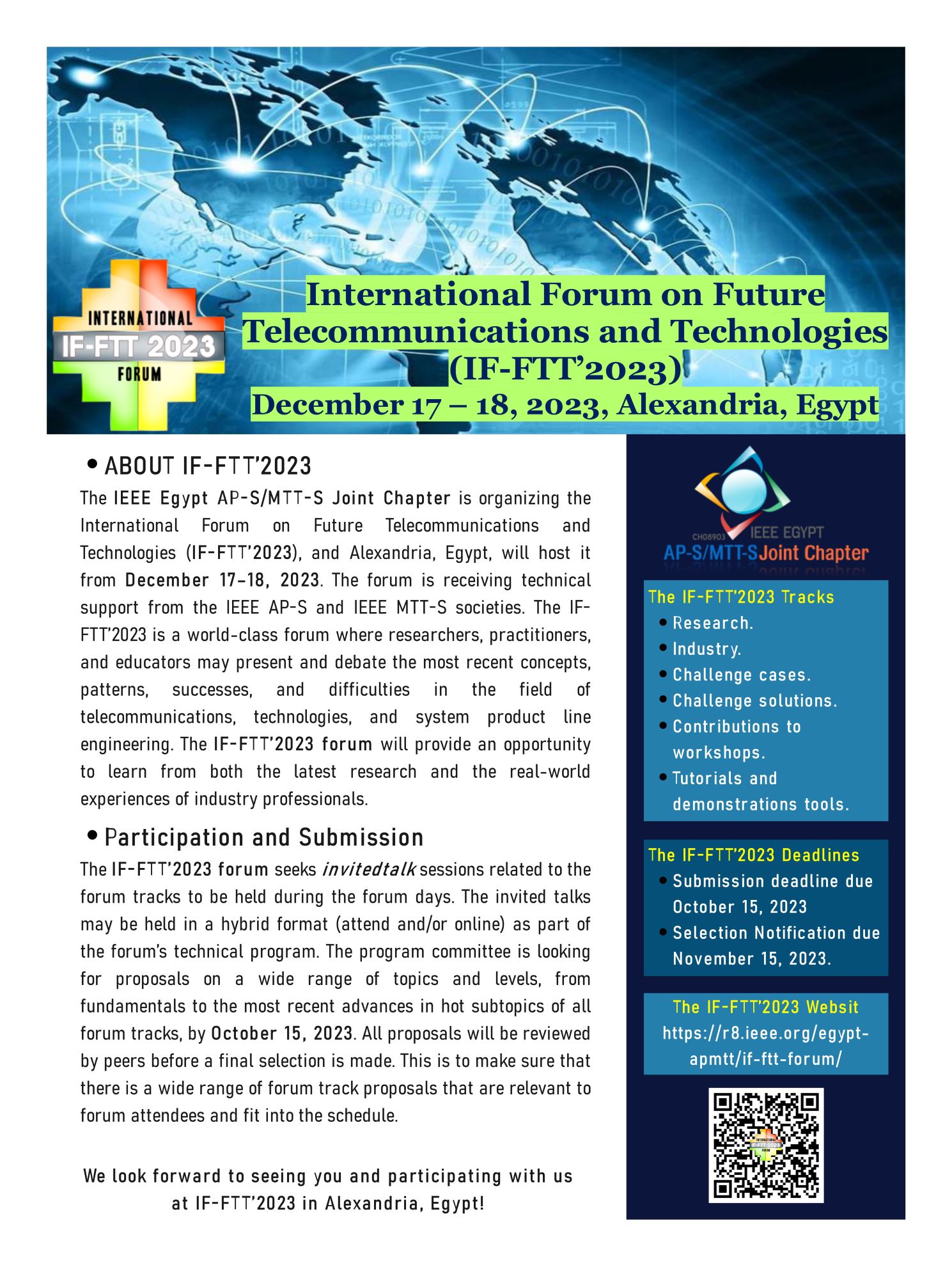
ABOUT IF-FTT’2023
The IF-FTT’2023 forum will receive technical support from the IEEE AP-S and IEEE MTT-S societies. The IF-FTT’2023 is a world-class forum where researchers, practitioners, and educators may present and debate the most recent concepts, patterns, successes, and difficulties in the field of telecommunications, technologies, and system product line engineering. The IF-FTT’2023 forum will provide an opportunity to learn from both the latest research and the real-world experiences of industry professionals.
The IF-FTT’2023 Tracks
- Research.
- Industry.
- Challenge cases.
- Challenge solutions.
- Contributions to workshops.
- Tutorials and demonstrations tools.
The IF-FTT’2023 forum seeks invited talks sessions related to the forum tracks to be held during the forum days. The invited talks may be held in a hybrid format (attend and/or online) as part of the forum’s technical program. The program committee is looking for proposals on a wide range of topics and levels, from fundamentals to the most recent advances in hot subtopics of all forum tracks, by October 15, 2023. All proposals will be reviewed by peers before a final selection is made. This is to make sure that there is a wide range of forum track proposals that are relevant to forum attendees and fit into the schedule.
All colleagues, postgraduate students, and students are encouraged to participate in the IF-FTT’2023 Forum, and the IEEE Egypt AP-S/MTT-S Joint Chapter wishes them all the best.
Date and Time
Location
Hosts
Registration
-
 Add Event to Calendar
Add Event to Calendar
Loading virtual attendance info...
Speakers
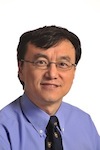 Prof. YI HUANG of Professor at Electrical Engineering and Electronics, The University of Liverpool, Liverpool, UK
Prof. YI HUANG of Professor at Electrical Engineering and Electronics, The University of Liverpool, Liverpool, UK
Liquid Materials and RF/Microwave Antennas
Antennas are vital components within radio and wireless systems, traditionally they are made of metal to attain heightened radiation efficiency. However, liquid antennas have recently emerged as an innovative paradigm commanding substantial contemporary interest. The University of Liverpool has been working in this area for the past ten years and accumulated a lot of experience and results.
In this talk, we will embark on an exploratory journey, unveiling the realm of liquid materials for RF/microwave antennas which include metallic and dielectric materials, water-based and non-water-based materials. From their distinctive attributes to nuanced limitations, also from the laboratory to possible real-world applications by the use of liquid antennas. With an emphasis on cutting-edge advancements, we will present the latest developments in liquid materials and antenna designs. A captivating centerpiece of our novel approach is to employ gravitational forces to make passive beam-steering liquid antennas for GPS/satellite applications.
Moreover, some examples such as a hybrid antenna of the dielectric resonant antenna (DRA) and magneto-electronic (ME) dipole will be introduced. The talk will be finished with the introduction of a new liquid MIMO antenna.
Biography:
Prof Yi Huang received DPhil in Communications from the University of Oxford, UK in 1994. He has been conducting research in the areas of wireless communications, applied electromagnetics, radar, and antennas since 1987. His experience includes 3 years spent with NRIET (China) as a Radar Engineer and various periods with the Universities of Birmingham, Oxford, and Essex in the UK as a member of research staff. He worked as a Research Fellow at British Telecom Labs in 1994 and then joined the Department of Electrical Engineering & Electronics, the University of Liverpool, UK as a Faculty in 1995, where he is now a full Professor in Wireless Engineering, the Head of High Frequency Engineering Group.
Prof Huang has published over 400 refereed papers in leading international journals and conference proceedings, and authored Antennas: from Theory to Practice (Wiley, 2008, 2021), Reverberation Chambers: Theory and Applications to EMC and Antenna Measurements (Wiley, 2016), and Anechoic and Reverberation Chambers (Wiley and IEEE Press, 2019). He has received many research grants from research councils, government agencies, charities, EU, and industry, and is a recipient of 8 awards (e.g. BAE Systems Chairman’s Award 2017, IET Innovation Award 2018, and many Best Paper Awards), and served on a number of national and international technical committees and been an Editor, Associate Editor or Guest Editor of five international journals. He has been a keynote/invited speaker and organiser of many conferences and workshops (e.g. IEEE iWAT2010, LAPC2012 and EuCAP2018). He is at present the Editor-in-Chief of Wireless Engineering and Technology, Associate Editor of IEEE Antennas and Wireless Propagation Letters, UK and Ireland Rep to the European Association of Antenna and Propagation (EurAAP 2016-2020), a Fellow of IEEE, and a Fellow of IET. More information can be found from:
https://www.liverpool.ac.uk/electrical-engineering-and-electronics/staff/yi-huang/
Address:Professor at Electrical Engineering and Electronics, The University of Liverpool, , Liverpool, United Kingdom
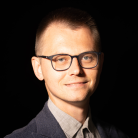 Assoc. Prof. ADAM NARBUDOWICZ of Senior Research Fellow at Trinity College Dublin and an Associate Professor at Wroclaw University of Science and Technology in Wroclaw, Poland
Assoc. Prof. ADAM NARBUDOWICZ of Senior Research Fellow at Trinity College Dublin and an Associate Professor at Wroclaw University of Science and Technology in Wroclaw, Poland
Securing IoT: Antennas as Padlocks, Propagation as a Key
Physical layer (PHY-layer) security is a topic of paramount significance, as it attempts to restrict the physical areas towards which the communication is transmitted. Dynamic Directional Modulation (DM) is a key-less technique to increase privacy of the wireless communication using features of antenna and propagation. Its traditional implementations require bulky antenna arrays, which are impractical for compact Internet of Things (IoT) devices. The talk presents recent advances in beamforming-capable electrically small antennas, their use for on-body DM. To support the low-power aspect of IoT, it demonstrates dynamic DM scheme with single RF chain and simplified computational power. Lastly, it discusses the double-edged use of MIMO systems, which can be deployed by attacker for their advantage.
Biography:
Adam Narbudowicz received the M.Sc. degree from the Gdansk University of Technology, Gdansk, Poland, in 2008, the Ph.D. degree from the Dublin Institute of Technology (now TU Dublin), Dublin, Ireland, in 2013, and the Habilitation (advanced doctorate) degree from the Wroclaw University of Science and Technology, Wroclaw, Poland, in 2020.
He is currently an SFI Starting Investigator at Trinity College Dublin, Dublin, Ireland leading The Electromagnetics, Antenna and Microwaves (TEAM) lab and also a part-time Associate Professor at Wroclaw University of Science and Technology, Wroclaw, Poland. He was a Post-Doctoral Fellow (twice) of Marie Skłodowska-Curie Action co-funded projects, including two-year research stay at RWTH Aachen University, Aachen, Germany. He has (co-)authored some 90 scientific publications in journals and peer-reviewed conference proceedings. His research interests include antenna miniaturization and electrically small antennas, machine learning for remote sensing and sustainable antenna technology.
Dr Narbudowicz received number of awards and distinctions, including the Scholarship for the Outstanding Young Polish Scientists in 2019, the Inaugural 2018 Prof. Tom Brazil CONNECT Excellence in Research Award, the best poster at the 2018 IEEE-EURASIP Summer School on Signal Processing, the 3rd Best Paper Award during ISAP 2017. He was also a mentor to the finalist team of the 2020 IEEE APS Student Design Contest. He sits in the Management Committee of the COST action SyMat: “Future communications with higher-symmetric engineered artificial materials” and served as the vice-chair for the IEEE Poland APS/MTT/AES Joint Chapter and vice-chair for the Small Antenna Working Group of The European Association on Antennas and Propagation (EurAAP).
Address:Senior Research Fellow at Trinity College Dublin and an Associate Professor at Wroclaw University of Science and Technology , , Wroclaw, Poland
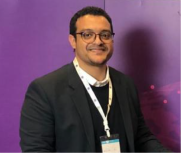 Dr. AHMED RADY of Founder, President, and CEO of Open Valley, Egypt
Dr. AHMED RADY of Founder, President, and CEO of Open Valley, Egypt
Open Networks and the Future of Connectivity
Open, interoperable, and standards-based radio access networks (Open RAN) lay the foundation for the future of connectivity and pave the road to telecom network transformation towards intelligent, software-centric, cloud-native, and more diversity in the global 5G/6G supply chain.
Biography:
Ahmed Rady, founder, president, and CEO of Open Valley. Active member and contributor to the global technology alliances and standard bodies based in the U.S. and Europe. As following:
O-RAN alliance (European based organization).
ONF, Open Network foundation (U.S based organization).
ATIS, Alliance for Telecommunications Industry Solutions (U.S based organization).
TIP, telecom infra project (U.S based organization).
CSA, Connectivity standard alliance (U.S based organization).
Address:Founder, President, and CEO of Open Valley, Egypt, , Cairo, Egypt
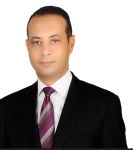 Asocc. Prof. HATEM KHATER of Associate Professor of Computer and Systems Engineering, AI and Vice Dean of Faculty of Engineering, Hours University, Egypt
Asocc. Prof. HATEM KHATER of Associate Professor of Computer and Systems Engineering, AI and Vice Dean of Faculty of Engineering, Hours University, Egypt
Improving the Performance of the Artificial Intelligence-Based Autonomous Surface Navigation System
The integrated navigation system presented in this session may perform more effectively than an inertial navigation system (INS), but its outputs are not sufficiently reliable because of deviations brought on by accelerometers. To enhance navigation in severe conditions, the recommended approach principally depends on the intelligence integration of embedded sensors into smartphones' micro electro-mechanical system (MEMS)-INS, a global positioning system (GPS), and a visual navigation brain model (VNBM).
Biography:
Dr. Hatem A. Khater received BSc. In Electrical Engineering, MSc. in Electronic and Communication Engineering and Ph.D. in Computer Engineering, Kent University, United Kingdom, in 2008. He is Associate Professor in computer engineering and systems, Vice Dean of Faculty of Engineering, HUE and lecturer (P.T) at the Arab Academy for Science and Technology (AASTMT), Computer Engineering Department, College of Engineering and Technology, College of Computing & Information Technology, Walls University. In addition, he held the position of Director of Naval Technical & Research and Development Department. His research interests include AI, DSP and Computer Vision. Member and Reviewer at IEEE, IET. Also, Member of Image and Information Engineering Research Group, University of Kent, U.K.
Address:Faculty of Engineering, Hours University, Egypt, , Dumiatta, Egypt
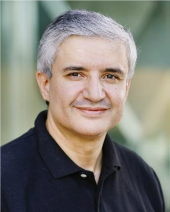 Prof. MOHAMED-SLIM ALOUINI of Distinguished Professor, Electrical and Computer Engineering, Wireless CT Lab, King Abdullah University of Science and Technology (KAUST), KSA
Prof. MOHAMED-SLIM ALOUINI of Distinguished Professor, Electrical and Computer Engineering, Wireless CT Lab, King Abdullah University of Science and Technology (KAUST), KSA
Towards Extreme Band Communications to Super-Connect the Connected and to Connect the Unconnected
A rapid increase in the use of wireless services over the last few decades has led to the problem of radio-frequency (RF) spectrum exhaustion. More specifically, due to this RF spectrum scarcity, additional RF bandwidth allocation, as utilized in the recent past over "traditional bands", is not anymore enough to fulfill the demand for more wireless applications and higher data rates. The talk goes first over the potential offered by extreme band communication (XB-Com) systems to relieve spectrum scarcity. Indeed, mm-wave, THz, and free space optics broadband wireless systems recently attracted several research interests worldwide due to the progress in electronics and photonics technologies. By utilizing these extreme frequency bands and employing extreme large bandwidths, the 6G target data rates over 100 Gbps could be achieved. The talk then summarizes (i) some of the challenges that need to be surpassed before such kinds of systems can be deployed and (ii) some of on-going activities in this area in order to achieve this goal
Biography:
Mohamed-Slim Alouini was born in Tunis, Tunisia. He received the Ph.D. degree in Electrical Engineering from the California Institute of Technology (Caltech) in 1998. He served as a faculty member at the University of Minnesota then in the Texas A&M University at Qatar before joining in 2009 the King Abdullah University of Science and Technology (KAUST) where he is now the Al-Khawarizmi Distinguished Professor of Electrical and Computer Engineering. Prof. Alouini is a Fellow of the IEEE and OPTICA (Formerly the Optical Society of America (OSA)). He is currently particularly interested in addressing the technical challenges associated with the uneven distribution, access to, and use of information and communication technologies in rural, low-income, disaster, and/or hard-to-reach areas.
Address:King Abdullah University of Science and Technology (KAUST), KSA, , Saudi Arabia
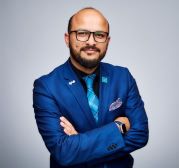 Prof. QAMMER ABBASI of Professor of Applied Electromagnetics and Sensing (Electronic & Nanoscale Engineering), James Watt School of Engineering, University of Glasgow, UK
Prof. QAMMER ABBASI of Professor of Applied Electromagnetics and Sensing (Electronic & Nanoscale Engineering), James Watt School of Engineering, University of Glasgow, UK
6G and Its Enabling Technologies
Future wireless networks are expected be more than allowing people, mobile devices, and objects to communicate with each other. The sixth generation (6G) of mobile networks are envisioned to include high data rate applications and ultra-massive, connected things. This also includes bio and nano-internet of things (IoT) tele-operated driving, unmanned mobility, haptic communications, unmanned aerial vehicles, and many more. Given the size of nano-sensors, THz frequency is proposed to do various sensing activities at this scale. However, it will be ideal to use the same radio frequency for communications as well. Furthermore, THz is also proposed as an enabler of extremely high data rate applications in 6G communications. The talk will be focused on enablers for 6G which includes i) Terahertz antenna design, ii) new technology, which is referred to as Reconfigurable Intelligent Surfaces (RISs) and ii) joint communication and sensing in 6G and state of the art in this area.
Biography:
Qammer H. Abbasi (SMIEEE, MIET, FRET, FRSA, FEAI, Industrial FREng), is a Professor with the James Watt School of Engineering, University of Glasgow, U.K., theme lead for Connecting People, deputy head for Communication Sensing and Imaging group (110+ researchers), deputy theme lead for Quantum & Nanotechnology in the University’s Advance Research Centre, Co-Manager for RF and terahertz laboratory. He has grant portfolio of £10M+ and contributed to more than 450+ leading international technical journal (including Nature Portfolio) and peer reviewed conference papers and 10 books and received several recognitions for his research including URSI 2019 Young Scientist Awards, UK exceptional talent endorsement by Royal Academy of Engineering, Sensor 2021 Young Scientist Award , National talent pool award by Pakistan, International Young Scientist Award by NSFC China, National interest waiver by USA, University Research Excellence Award from TAMUQ in two consecutive years, Reward for Excellence from University of Glasgow, Research Culture award University of Glasgow, 11 best paper awards, Pakistan Award (for services to Antenna and RF community in Pakistan), Best chapter award 2021 as chair from IEEE APS and IEEE MTT both, most downloaded paper in IEEE Terahertz Transaction, cover of MDPI journal twice, Editor’s choice paper from MDPI Sensor 2021, and best representative image of an outcome by QNRF. In addition, his work received media coverage by Analog IC tips, Microwaves & RF newsletters, Vertical news, Pakistan Dawn news, BBC news, Scotland TV, Fiercewireless, City42, Dunya news, Chinese news and many other media houses. Dr. Abbasi is an IEEE senior member and is chair of IEEE AP/MTT Scotland joint chapter and was chair of IEEE young professional affinity group. He is an Associate editor for IEEE Journal of Electromagnetics, RF, and Microwaves in Medicine and Biology, IEEE Sensors, IEEE Internet of Things, IEEE open access Antenna and Propagation, senior editor for Frontiers IoT and Sensors Networks section and acted as a guest editor for numerous special issues in top notch journals. He is a committee member for IEEE APS Young professional, Sub-committee chair for IEEE YP Ambassador program, IEEE 1906.1.1 standard on nano communication, IEEE APS/SC WG P145, IET Antenna & Propagation and healthcare network. Dr. Abbasi has been a member of the technical program committees of several IEEE flagship conferences and technical reviewer for several IEEE and top notch journals and acted as TPC chair and executive chair for 4th, 5th and 6th international UCET conference 2019, 2020, 2021 in addition to EAI Bodynets 2021 General Chair. Dr. Abbasi is expert reviewer for UK National Commission for UNESCO’s, EPSRC and MRC UK (panel member, 2020), Qatar national research funds, Flemish funding council (FWO, panel member), Belgium, OSF Polland, British council, UAE and KSA funds. He serves regularly as organiser of conferences, special sessions, workshops and TPC member for several IEEE flagship conferences, in addition to reviewer for Wiley & Sons books, Springer, IET books, IEEE conferences and more than 30 leading journals including Nature. He is Fellow of Royal Society of Arts, Fellow of European Alliance of innovation and industrial Fellow of Royal Academy of Engineering
Address: James Watt School of Engineering, University of Glasgow, UK, , Glasgow, United Kingdom
 Dr. KHALED NAGUIB of General Manager (GM) and Co-founder at Digital Hub Company, Egypt
Dr. KHALED NAGUIB of General Manager (GM) and Co-founder at Digital Hub Company, Egypt
New ERA in AI and Its Effect on Digital Transformation
A comprehensive analysis will be undertaken regarding the impact of artificial intelligence (AI) on the digital landscape, signaling the advent of a new era in digital transformation. The evolution of AI will be traced, showcasing how it has been transformed and how it is now poised as a driving force for change within the digital realm. Key drivers of this transformation, in the form of emerging AI trends, will be brought into focus, illustrating their role in reshaping industries and redefining various business processes. Furthermore, the intricate intersection of AI and digital transformation will be navigated, revealing the dawn of a new era in which the capabilities of AI stand at the forefront of reshaping the digital landscape.
Biography:
Khaled Naguib: General Manager (GM) and Co-founder at Digital Hub Company
Khaled Naguib is a seasoned professional with over a decade of experience in the field of communication and technology. As the General Manager and co-founder of Digital Hub Company, he spearheads the company's mission to deliver cutting-edge programming and training solutions.
With a background in communication engineering, Khaled has a profound understanding of various communication technologies, including Mobile Communication, Embedded Systems, Internet of Things (IoT), and Artificial Intelligence (AI). His extensive expertise is built upon a career spanning 10+ years in the telecommunications industry.
Khaled's professional journey is marked by remarkable achievements, including:
Communications: He boasts 10+ years of hands-on experience in Communications technologies.
Embedded Systems: With 8+ years in embedded systems development, Khaled has contributed to numerous projects.
IoT Communication Technology: Khaled has 6+ years of expertise in the rapidly evolving field of IoT communication.
Machine Learning and AI: He has 5+ years of experience in Machine Learning and Artificial Intelligence, which have led to the creation of 20+ AI solutions.
Teaching: Khaled has shared his knowledge with international university students for a decade, impacting the education of over 2500 students worldwide.
Notably, Khaled has played a pivotal role in initiatives aimed at bridging the digital divide. He was a key participant in a collaborative effort between the Ministry of Communications and IBM, where he contributed to training over 1000 candidates in digital transformation.
Khaled holds certifications in Python programming, Machine Learning, Deep Learning, AI Analysis, IoT design, IoT cloud development, and Mobile Communication from industry leaders Huawei and IBM. His dedication to education and excellence has earned him recognition as one of the top instructors in Egypt through the Huawei Talent iTB program, along with an appreciation award from MSA University.
Khaled Naguib's leadership at Digital Hub Company continues to drive innovation and excellence in the world of technology and programming, making him a prominent figure in the industry.
Address:General Manager (GM) and Co-founder at Digital Hub Company, Egypt, , Cairo, Egypt
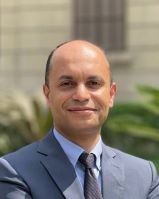 Prof. SHERIF M. ABUELENIN of Professor of Communications Engineering, Head of the Department of Electrical Engineering, Faculty of Engineering, Port-Said University, Egypt
Prof. SHERIF M. ABUELENIN of Professor of Communications Engineering, Head of the Department of Electrical Engineering, Faculty of Engineering, Port-Said University, Egypt
On The Connectivity Analysis of Wireless Ad-Hoc Networks
Wireless Ad-Hoc networks (WANETs) are communication networks that enable information exchange between devices without the need for a communication infrastructure. Data are exchanged spontaneously (in ad hoc manner), in a single- or multi-hop route when devices are within range of each other. Examples of WANETs include vehicular ad-hoc networks (VANETs) and flying ad-hoc networks (FANETs).
Connectivity is a key aspect in the analysis and planning of ad-hoc networks. In general, a WANET is connected if a communication path exists between any two nodes in the network through single hop or multiple hops. Several factors affect connectivity, including the communication range of the devices (which depends on the transmitted power level, among other parameters), spatial distribution of the nodes, and the communication channel. Connectivity analysis can help in proper selection in the necessary transmit power level needed for avoiding unnecessary energy consumption, as well as avoiding outages and minimizing interference.
Connectivity analysis can become very complicated in multi-hop ad hoc networks, especially when the effects of communication channel impairments are included in the analysis. Accurate mathematical modelling of such scenarios may not be possible.
Graph theory is the mathematical framework of network theory, which has been applied in many research fields. Graph theory tools are very effective in describing and analyzing complex networks. This talk presents how graph-based modeling of wireless ad-hoc networks enables accurate predictions of network behavior without the need of rigorous mathematical models.
Biography:
Sherif M. Abuelenin, Professor of Communications Engineering, Head of the Department of Electrical Engineering, Faculty of Engineering, Port-Said University
Received the B.Sc. degree in electronics and communications from Suez Canal University, Egypt in 1999, the M.Sc. degree in Electrical Engineering from Tuskegee University in 2002, and the Ph.D. degree from Auburn University in 2005. He joined Tuskegee University as an assistant professor of Electrical Engineering in 2005. From 2007 to 2011 he served as an assistant professor in the faculty of Engineering Sciences, Sinai University, Egypt. In 2012, he joined the faculty of engineering, Port-Said University, where he currently is a professor of communications engineering. His research interests include signal processing, wireless communications, vehicular communications, graph theory, and artificial intelligence.
Address:Head of the Department of Electrical Engineering, Faculty of Engineering, Port-Said University, Egypt, , Port-Said, Egypt
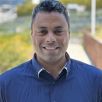 Asst. Prof. Mohammed Elamassie of Özyeğin University, Istanbul, Turkey
Asst. Prof. Mohammed Elamassie of Özyeğin University, Istanbul, Turkey
Exploring the Potential of Multi-Layered Airborne Networks for Optical Backhaul
The forthcoming generations of wireless technology are anticipated to benefit from the widespread coverage established by the deployment of non-terrestrial networks (NTNs). Addressing the issue of a large part of the global population having little or no internet access is important, and using NTNs is key to bridging this gap. NTNs encompass various technologies, including High-Altitude Platform Stations (HAPSs), Satellites (GEO, MEO, LEO), and Unmanned Aerial Vehicles (UAVs). The evolution of autonomous avionics and lightweight composite materials positions HAPSs and rotary-wing UAVs as viable NTN nodes for future networks. In the context of advanced wireless technologies like 6G and beyond, the primary objective is the seamless integration of NTN nodes with terrestrial networks. Presently, there are isolated examples of NTN deployment, exemplified by initiatives such as Google Loon, Nokia F-Cell, AT&T Tethered Flying Cell on Wing (COW), LEO mega-constellations, and Turkcell-Dronecell. This presentation specifically delves into the design of a multi-layer airborne backhaul network, leveraging HAPSs and rotary-wing UAVs to establish free-space optical (FSO) backhaul connections with ground-based stations. HAPS fleets operate along circular tracks at stratospheric altitudes, while rotary-wing UAVs operate at medium and lower altitudes, complementing the capabilities of HAPSs. The architecture of the airborne backhaul necessitates careful design to ensure uninterrupted connectivity with ground-based stations, thereby eliminating coverage gaps. The presentation articulates a systematic approach to designing FSO-based airborne backhaul systems, demonstrating the process of determining the optimal number of layers, HAPS tracks, HAPS units per track, the number of UAVs at lower altitudes, the operating altitude for middle-layer UAVs, and the number of laser sources per airborne node based on a specified coverage area.
Biography:
Dr. Mohammed Elamassie received the B.Sc. and M.Sc. degrees in electrical engineering from the Islamic University of Gaza, Gaza Strip, Palestine, in 2006 and 2011, respectively, and the Ph.D. degree in electrical and electronics engineering from Özyeğin University, Istanbul, Turkey, in 2020. He is currently an Assistant Professor at Özyeğin University, Istanbul, Turkey. He also serves as the Executive Co-Director of the Centre of Excellence in Optical Wireless Communication Technologies (OKATEM).
Dr. Elamassie's research interests are in the broad area of optical wireless communications. Specific topics include underwater visible light communication, vehicular visible light communications, airborne free space optical communication, atmospheric channel modeling, diversity techniques for fading mitigation, and MIMO communications. He has authored over 50 publications in reputable journals and conferences on these topics, with 800+ Google Scholar Citations and an H-index of 15 as of August 2023.
Dr. Elamassie received the Best Paper Award at the IEEE International Black Sea Conference on Communications and Networking 2019. He is also the recipient of the 2020 IEEE Turkey Doctoral Dissertation Award. He is actively engaged in the academic community. He holds senior memberships in both IEEE and Optica and is an Optica Travelling Lecturer. In addition, he serves as a Review Editor on the Editorial Boards of Frontiers in Communications and Networks' specialty sections 'Non-Conventional Communications and Networks' and 'Wireless Communications.
Address:Özyeğin University, , Istanbul, Türkiye
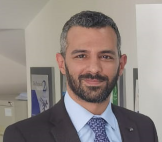 IBRAHIM KAMEL IBRAHIM of My Communication Company, Egypt
IBRAHIM KAMEL IBRAHIM of My Communication Company, Egypt
Propagation and Scattering in In-Building Solutions (IBS)
The "Propagation and Scattering in IBS (In-Building Solutions)" workshop is designed to deepen understanding of indoor wireless communication. It focuses on how signals propagate and scatter within buildings, exploring the impact of building materials and designs on signal quality. Attendees will learn about the principles of electromagnetic wave transmission in confined spaces and the use of IBS technologies to improve signal coverage and strength. This session is ideal for telecommunications professionals seeking to enhance their skills in designing and managing effective in-building wireless solutions.
Biography:
Eng. Ibrahim is CEO of My Communication Company, Egypt. He is a DWDM solution Architecture Consultant ( DETASAD ), Network Consultant, Technical Director (TD), and Project Design Manager (PDM).
Address:My Communication Company, , Egypt
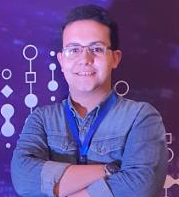 Eng. ABDELRHMAN ESLAM HASAN of Under Control Company, Egypt
Eng. ABDELRHMAN ESLAM HASAN of Under Control Company, Egypt
Inside the Embedded World: A Webinar for Aspiring Engineers
- Introduction to Embedded Systems:
- Defining embedded systems and understanding their significance in modern technology.
- Roles and Responsibilities of an Embedded Engineer:
- Exploring the diverse tasks and responsibilities involved in the role of an embedded engineer.
- Key Skills for Success:
- Discussing the essential technical and soft skills needed to excel in embedded engineering.
- Tools of the Trade:
- Overview of the commonly used tools, software, and hardware in embedded system development.
- Embedded Programming Languages:
- A deep dive into programming languages commonly used in embedded systems (e.g., C, C++, Python).
6.Microcontrollers and Microprocessors:
- Understanding the difference between microcontrollers and microprocessors, and their applications.
- RTOS (Real-Time Operating Systems):
- Introduction to real-time operating systems and their importance in embedded applications.
- Embedded Hardware Design:
- Basics of hardware design, including circuit design, PCB layout, and component selection.
- Wireless Communication in Embedded Systems:
- Exploring wireless technologies used in embedded systems (e.g., Bluetooth, Wi-Fi, IoT).
- Case Studies and Project Examples:
- Showcasing real-world examples and projects to demonstrate the application of embedded engineering concepts.
- Industry Trends and Innovations:
- Staying updated on the latest trends, innovations, and emerging technologies in the embedded world.
- Career Paths in Embedded Engineering:
- Discussing various career paths, industries, and opportunities for embedded engineers.
- Building a Strong Portfolio:
- Tips for creating a compelling portfolio that showcases your skills and projects.
- Networking and Professional Development:
- Strategies for networking within the embedded community and avenues for continuous professional development.
- Q&A Session:
- Allowing participants to ask questions and receive personalized advice.
Biography:
Eng. Abdelrahman is the CEO of the under control company. He is a INSTRUCTOR AND CONSULTANT, HIGHER INNOVATION CENTER
Address:Under Control Company, , Egypt
Agenda
The IF-FTT’2023 | December 17, 2023
CLT | 5:50-6:00 pm (CLT: GMT+2) | Opening Speech and IF-FTT'2023 Forum Program
Yasser M. Madany | Founder and Chair of the IEEE Egypt AP-S/MTT-S Joint Chapter
CLT | 6:00-6:30 pm (CLT: GMT+2) | Liquid Materials and RF/Microwave Antennas
YI HUANG | Professor at Electrical Engineering and Electronics, The University of Liverpool, Liverpool, UK
CLT | 6:30-7:00 pm (CLT: GMT+2) | Securing IoT: Antennas as Padlocks, Propagation as a Key
ADAM NARBUDOWICZ | Senior Research Fellow at Trinity College Dublin and an Associate Professor at Wroclaw University of Science and Technology in Wroclaw, Poland
CLT | 7:00-7:30 pm (CLT: GMT+2) | Exploring the Potential of Multi-Layered Airborne Networks for Optical Backhaul
MOHAMMED ELAMASSİE | Assistant Professor (EE), Communication Systems at Özyeğin University, Istanbul, Turkey
CLT | 7:30-8:00 pm (CLT: GMT+2) | Open Networks and the Future of Connectivity
AHMED RADY | Founder, President, and CEO of Open Valley, Egypt
CLT | 8:00-8:30 pm (CLT: GMT+2) | Improving the Performance of the Artificial Intelligence-Based Autonomous Surface Navigation System
HATEM KHATER | Associate Professor of Computer and Systems Engineering, AI and Vice Dean of Faculty of Engineering, Hours University, Egypt
The IF-FTT’2023 | December 18, 2023
CLT | 6:00-6:30 pm (CLT: GMT+2) | Towards Extreme Band Communications to Super-Connect the Connected and to Connect the Unconnected
MOHAMED-SLIM ALOUINI | Distinguished Professor, Electrical and Computer Engineering, Wireless CT Lab, King Abdullah University of Science and Technology (KAUST), KSA
CLT | 6:30-7:00 pm (CLT: GMT+2) | 6G and Its Enabling Technologies
QAMMER ABBASI | Professor of Applied Electromagnetics and Sensing (Electronic & Nanoscale Engineering), James Watt School of Engineering, University of Glasgow, UK
CLT | 7:00-7:30 pm (CLT: GMT+2) | New ERA in AI and Its Effect on Digital Transformation
KHALED NAGUIB | General Manager (GM) and Co-founder at Digital Hub Company, Egypt
CLT | 7:30-8:00 pm (CLT: GMT+2) | On The Connectivity Analysis of Wireless Ad-Hoc Networks
SHERIF M. ABUELENIN | Professor of Communications Engineering, Head of the Department of Electrical Engineering, Faculty of Engineering, Port-Said University, Egypt
CLT | 8:00-8:30 pm (CLT: GMT+2) | Propagation and Scattering in In-Building Solutions (IBS)
Ibrahim Kamel Ibrahim | Technical Country Manager, My Communication Company, Egypt
CLT | 8:30-9:00 pm (CLT: GMT+2) | Inside the Embedded World: A Webinar for Aspiring Engineers
Abdelrahman Eslam Hasan | CEO, Under Control Company, Egypt
The IEEE Egypt AP-S/MTT-S Joint Chapter look forward to participating with us at IF-FTT’2023 Forum.
For more information, please check the forum website: https://r8.ieee.org/egypt-apmtt/if-ftt-forum/
Also, check the IF-FTT’2023 FORUM PROGRAM, https://r8.ieee.org/egypt-apmtt/if-ftt-program/
Media
| IF-FTT'2023 Forum | The IF-FTT’2023 is a world-class forum where researchers, practitioners, and educators may present and debate the most recent concepts, patterns, successes, and difficulties in the field of telecommunications, technologies, and system product line engineering. | 8.64 MiB |
| IF-FTT'2023 Forum | Event Video Links | 87.19 KiB |

